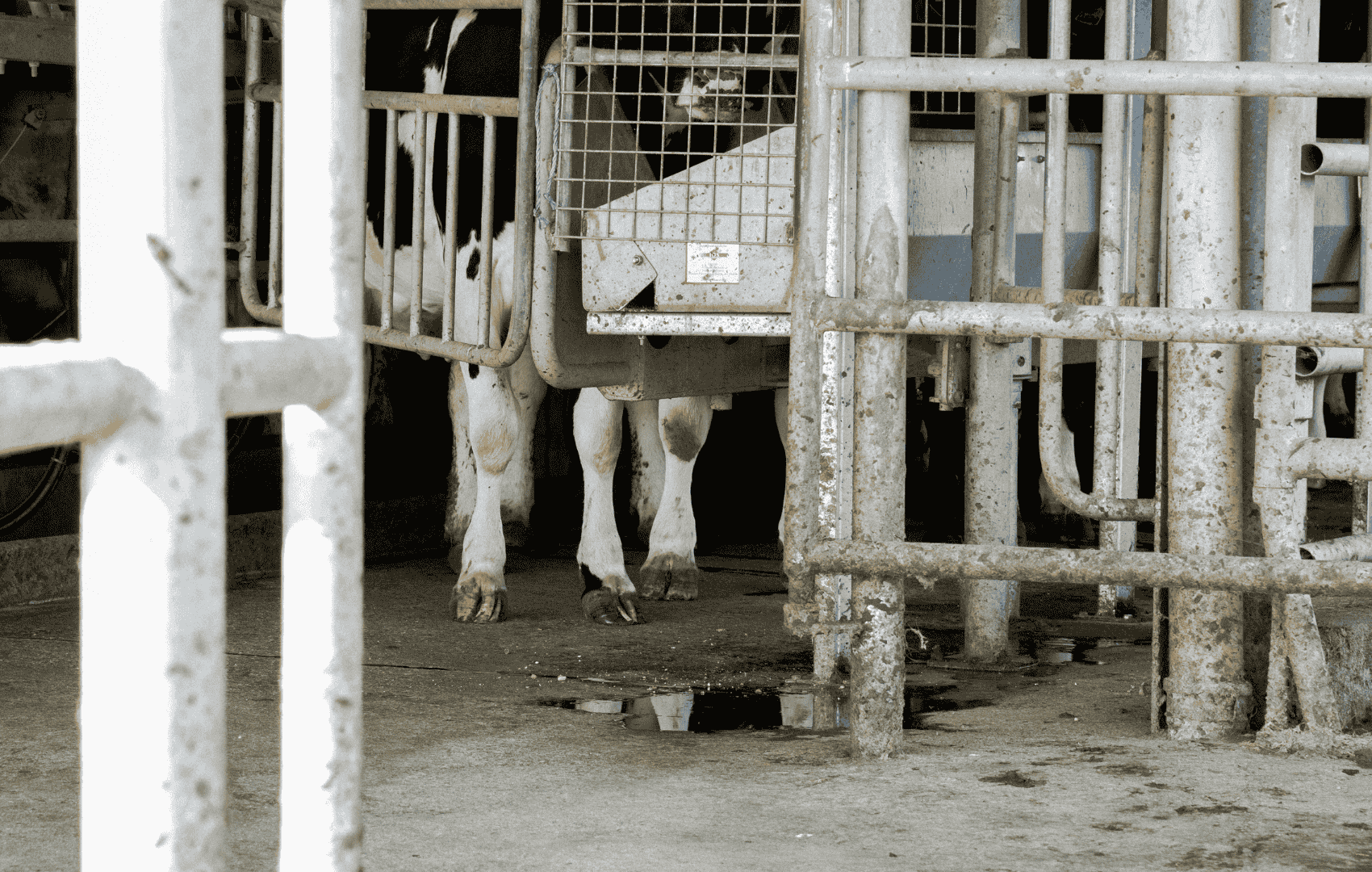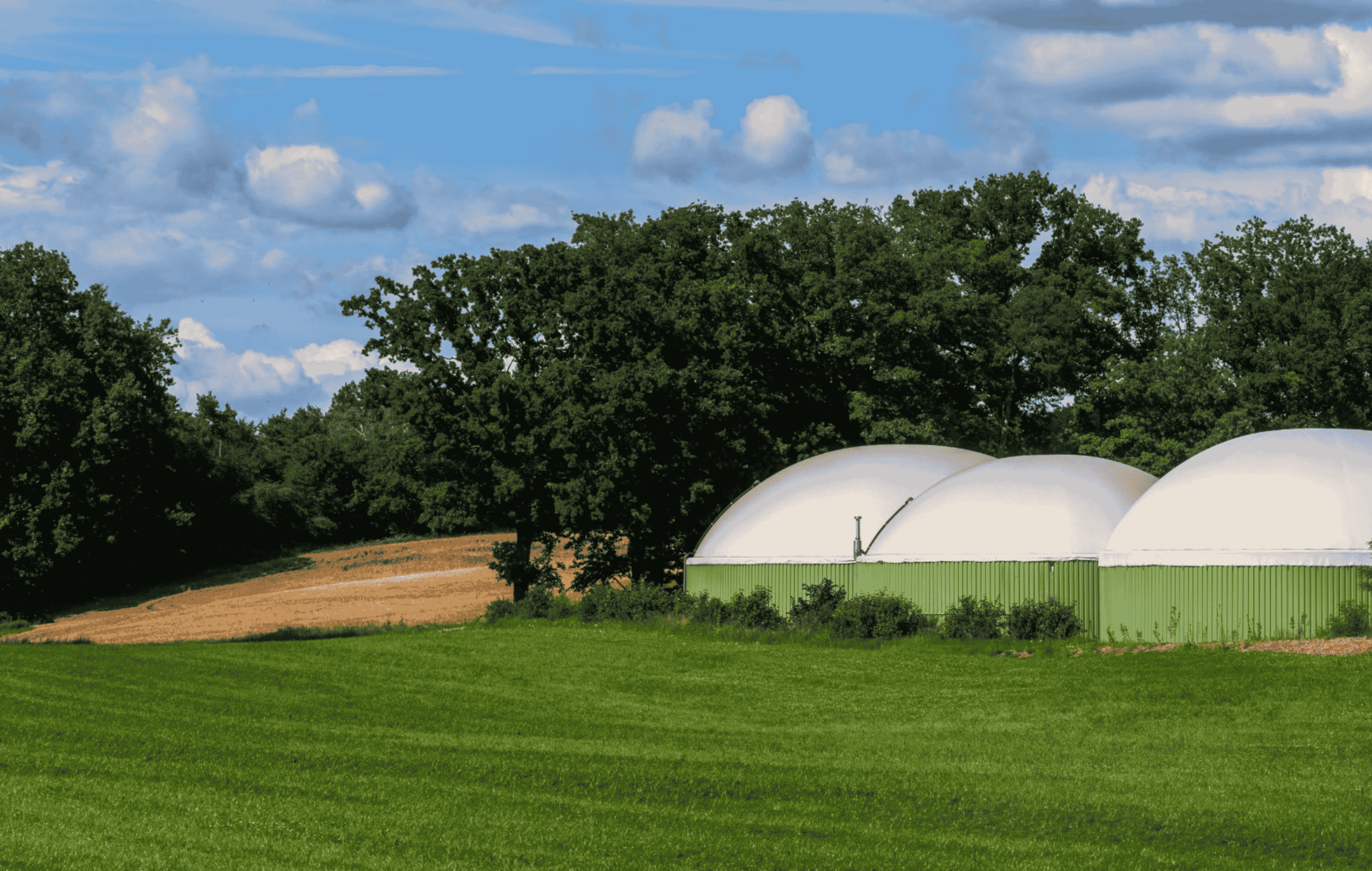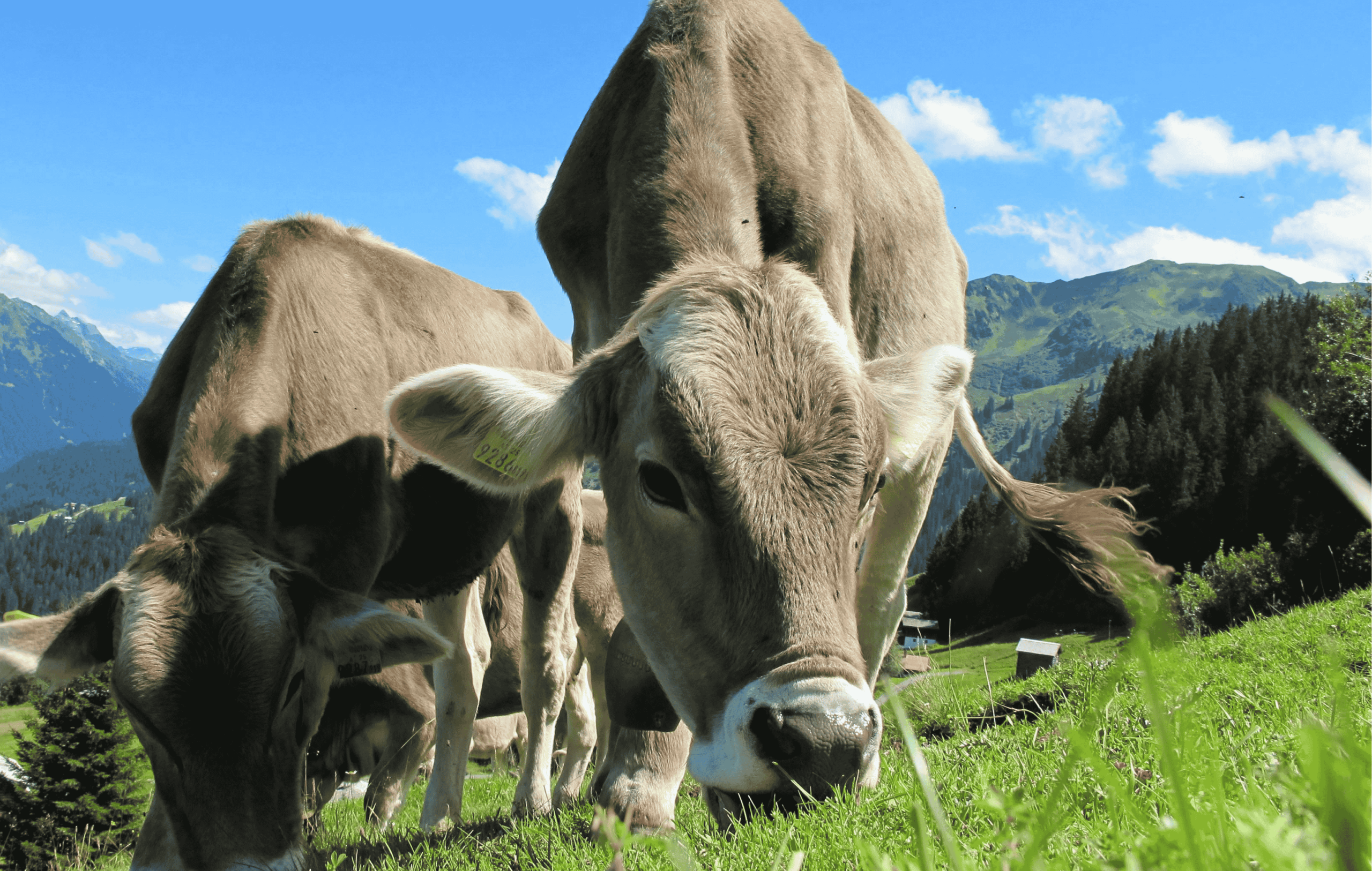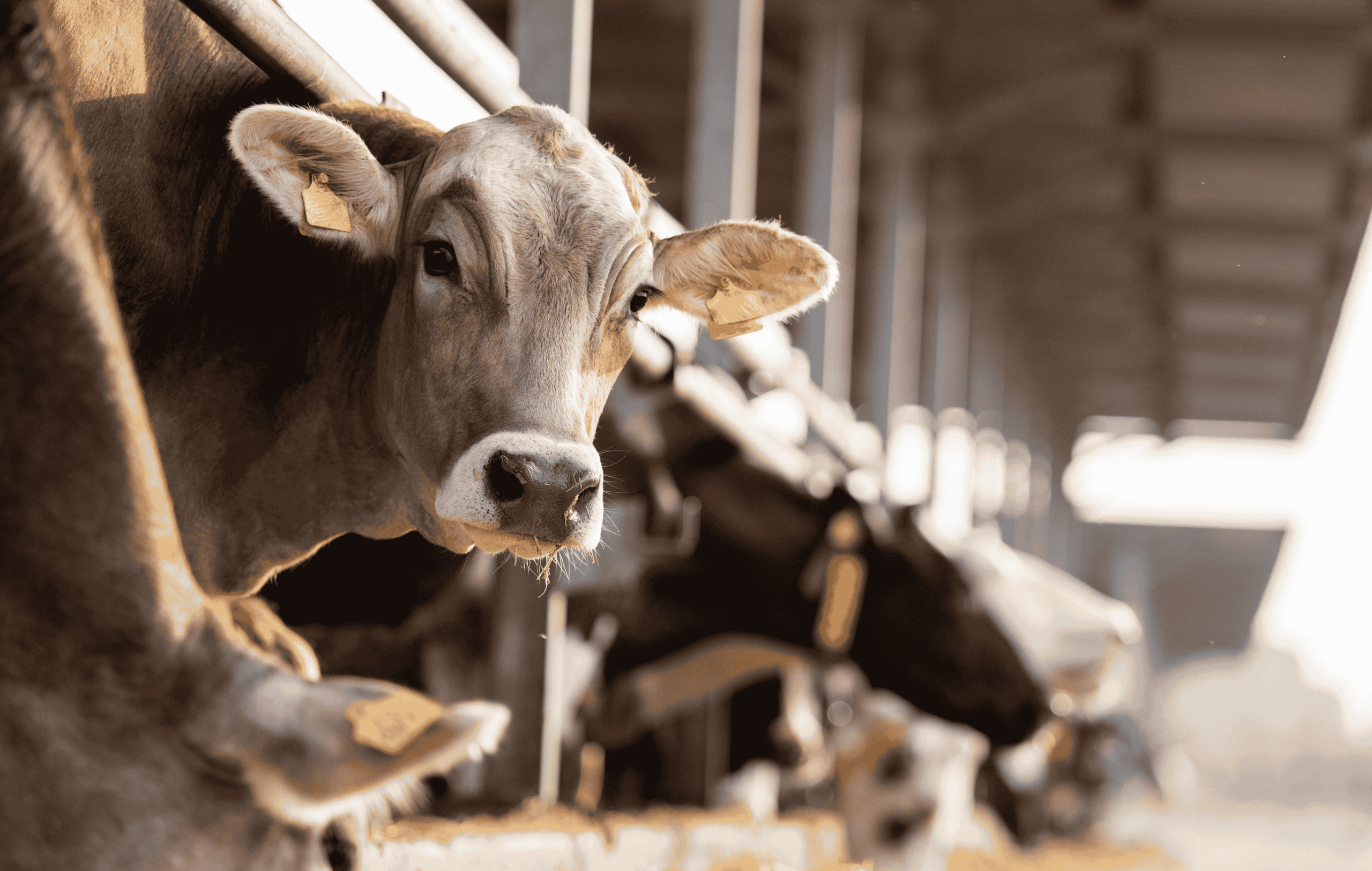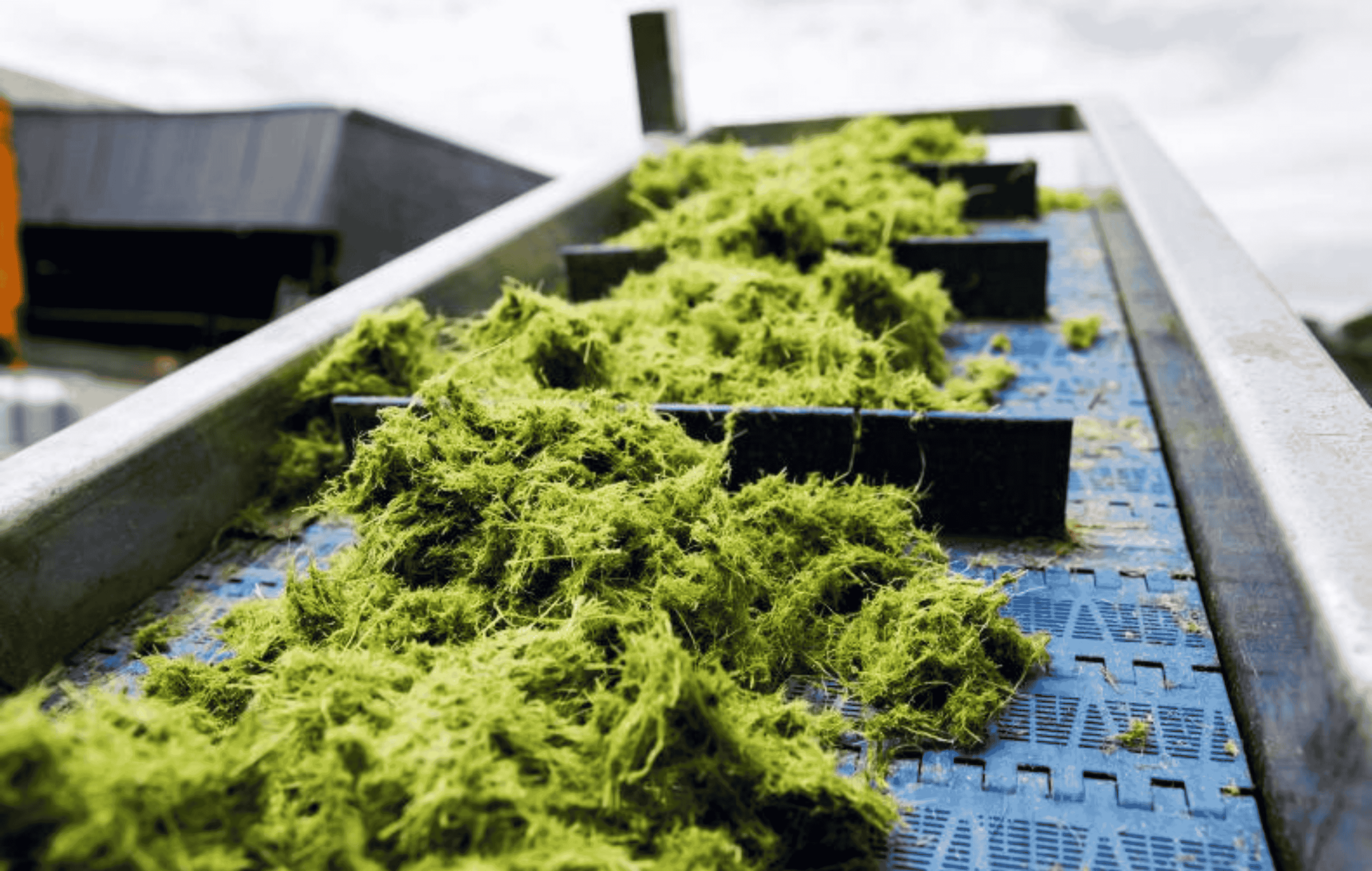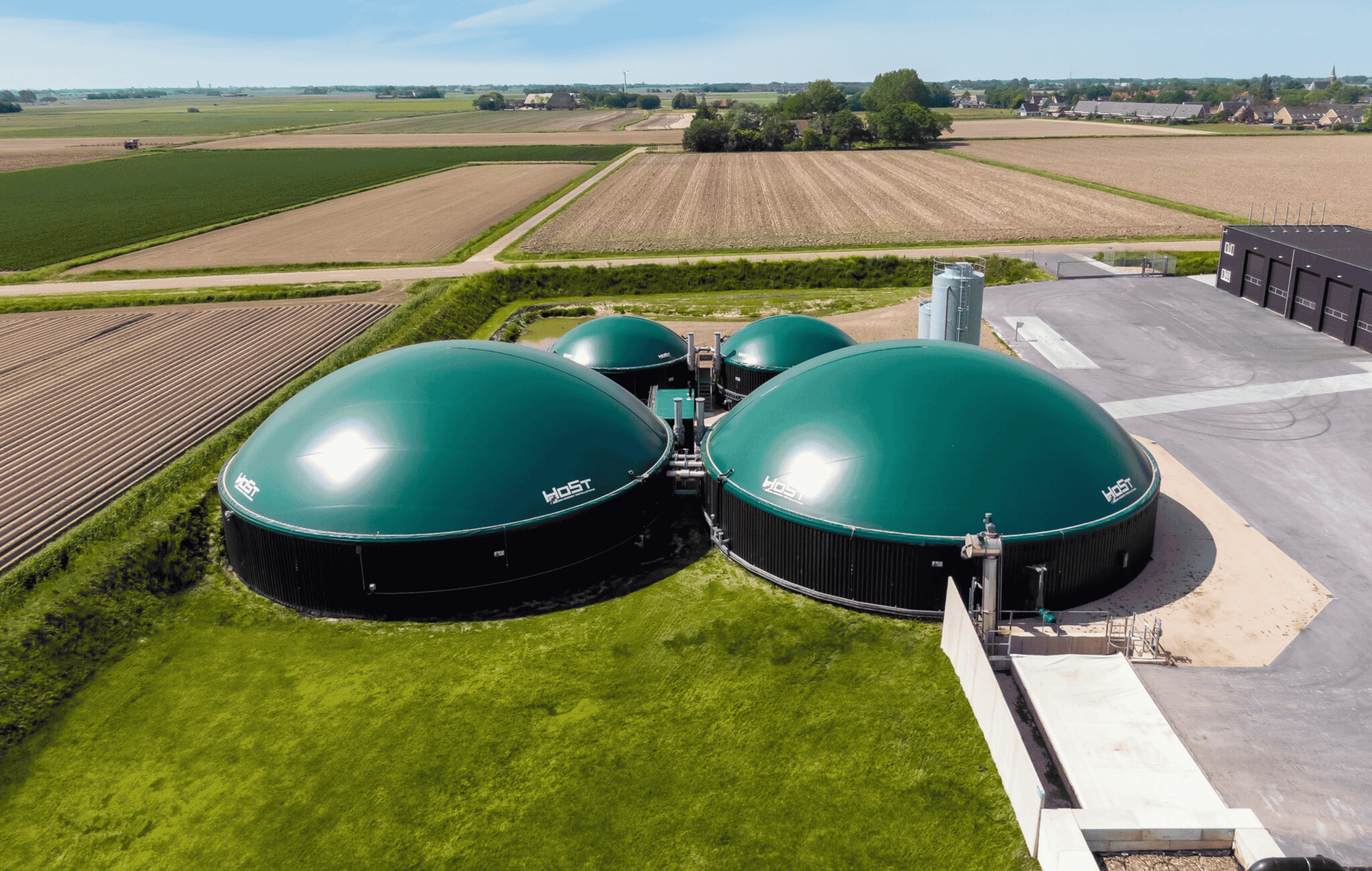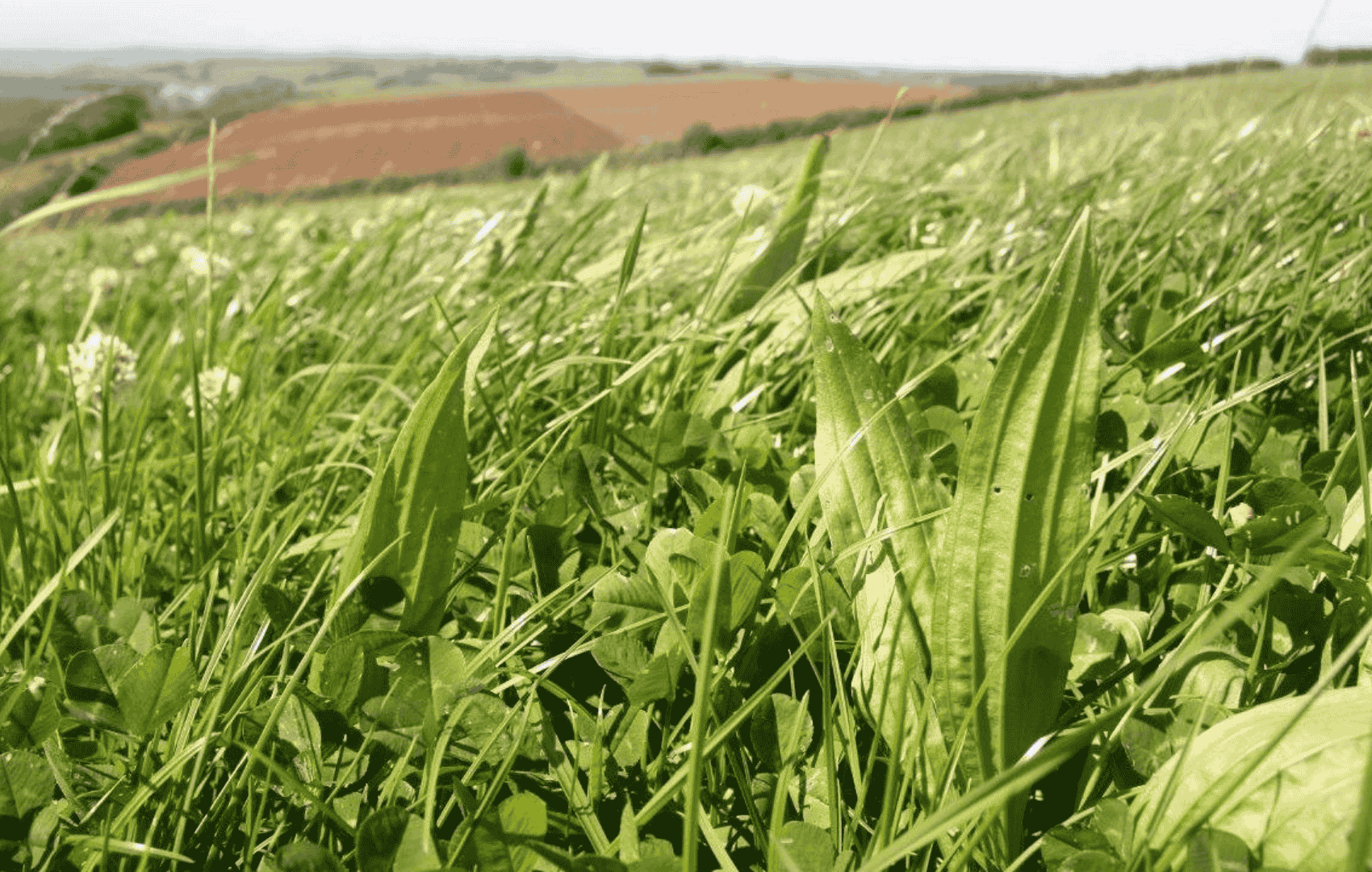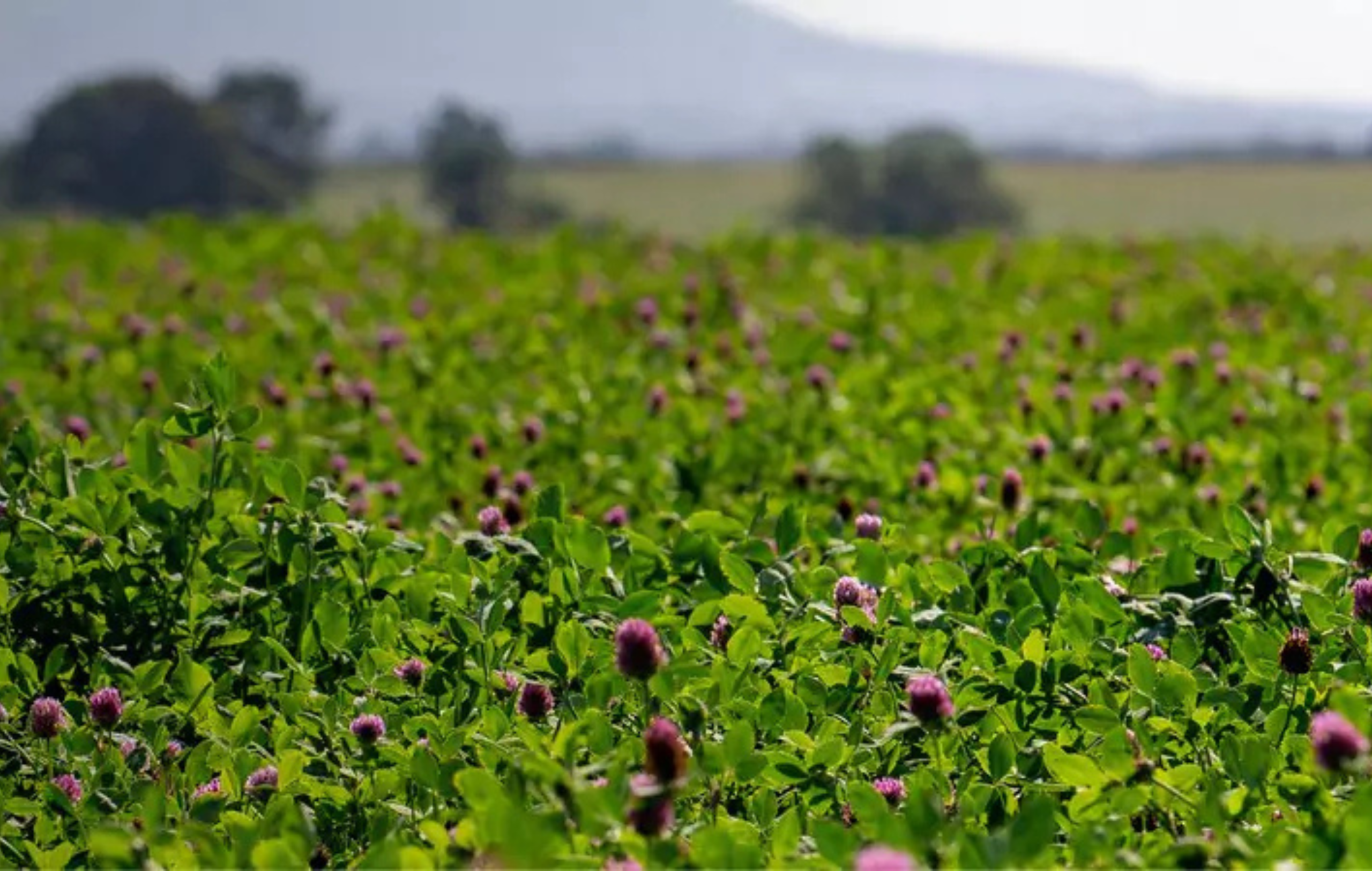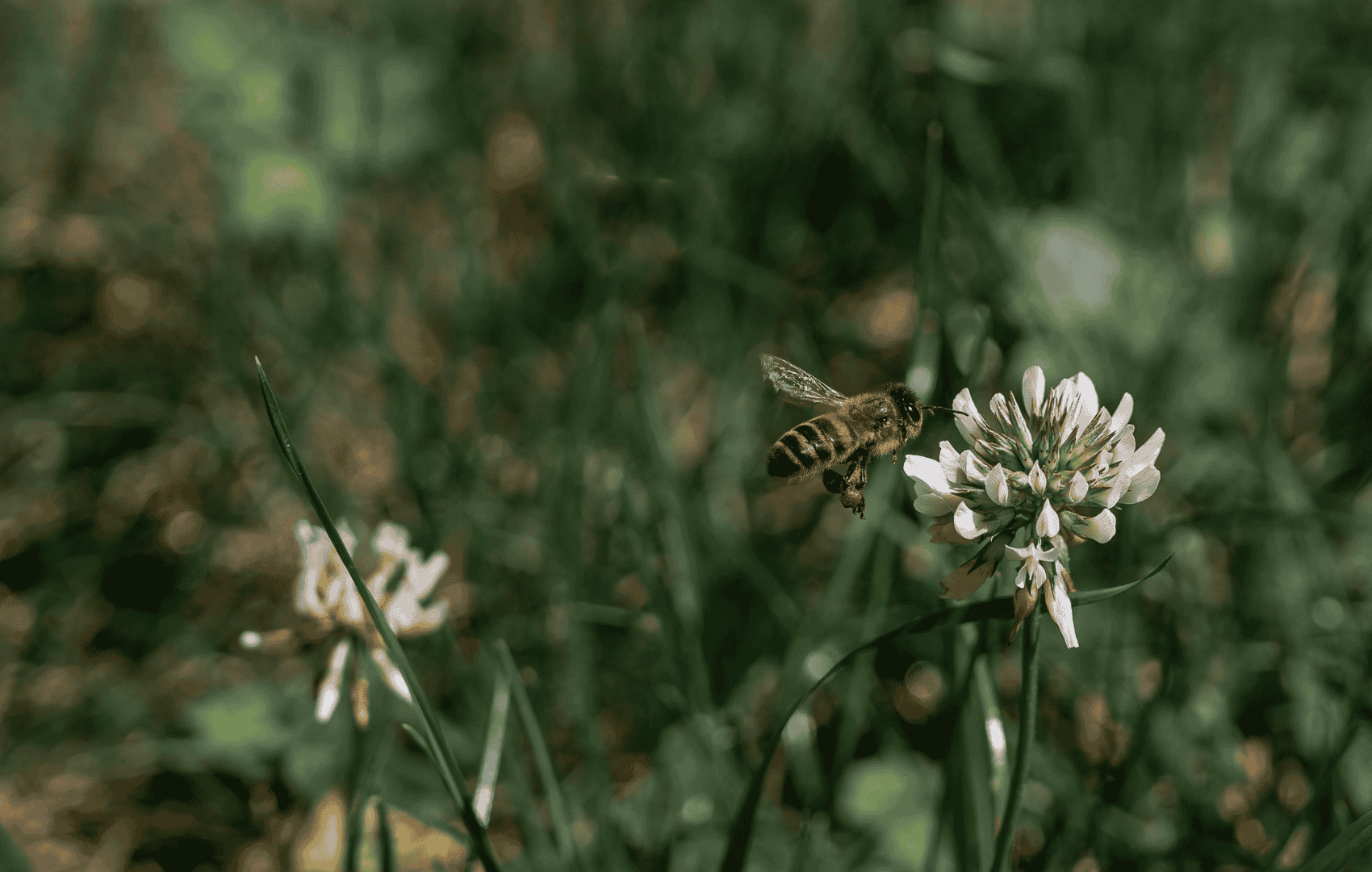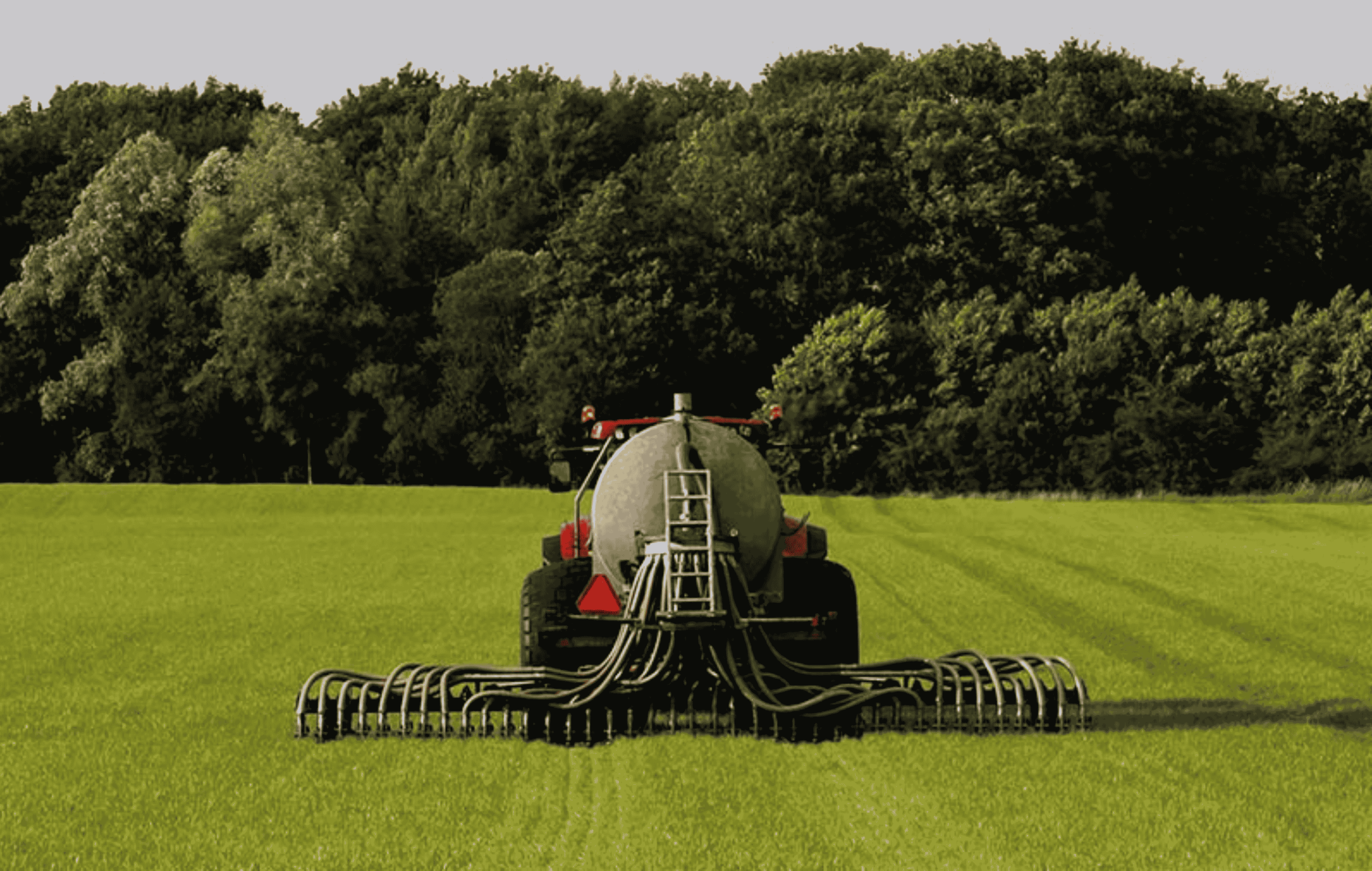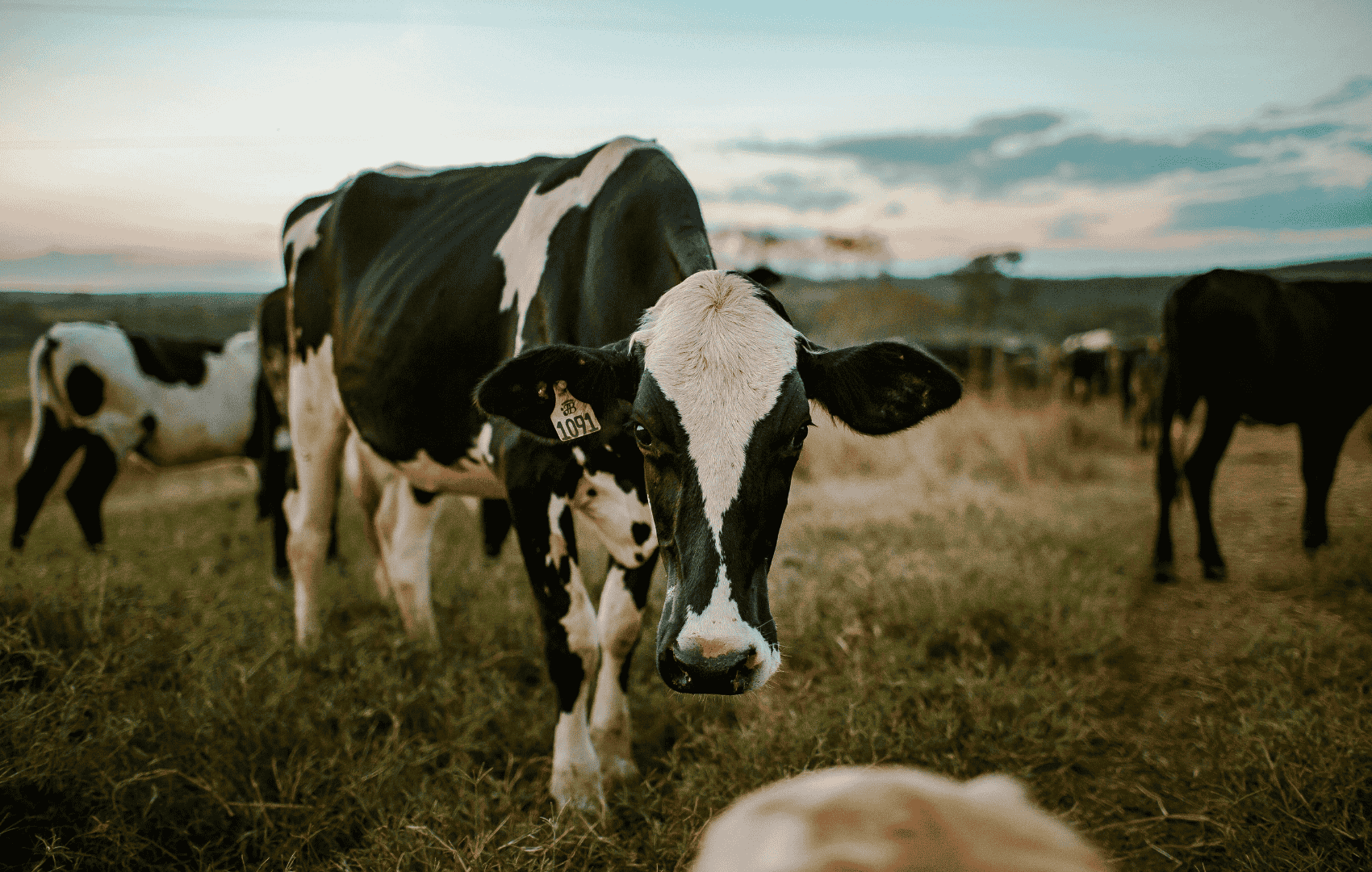Extending Grazing Season
Housing cattle too early raises costs and emissions.
Extending the grazing season boosts grass use and cuts emissions without hurting yields.
The Climate Issue
Grazing is one of the most efficient ways to feed dairy cows. Fresh grass is high in energy, supports strong milk yields, and grows back quickly when well managed. It’s also lower in emissions than any other feed.
But in many systems, cows are housed for long periods, sometimes up to five months a year. During housing, more meal is fed, slurry builds up, and emissions rise from storage and feed imports. Each extra day indoors costs more and pollutes more.
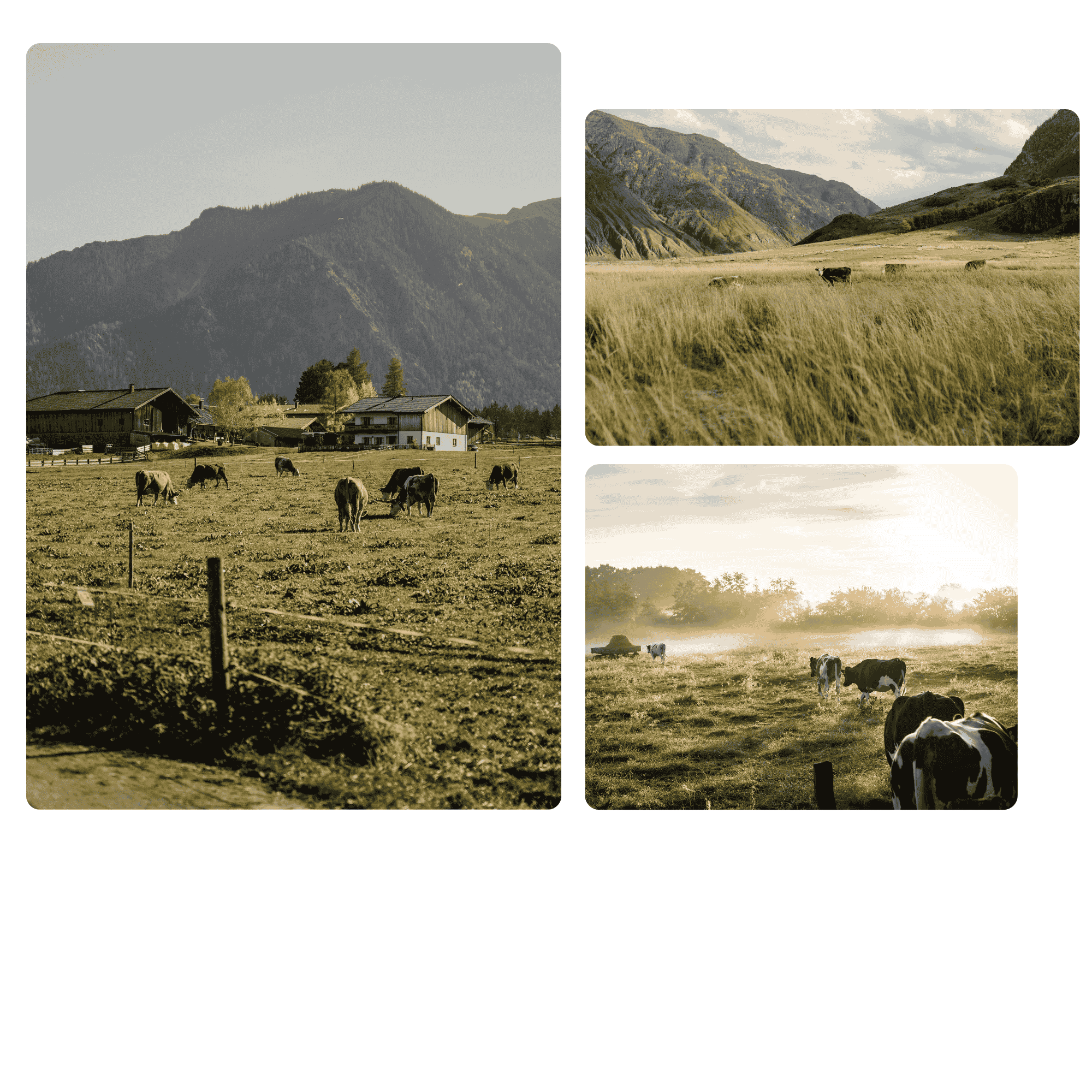
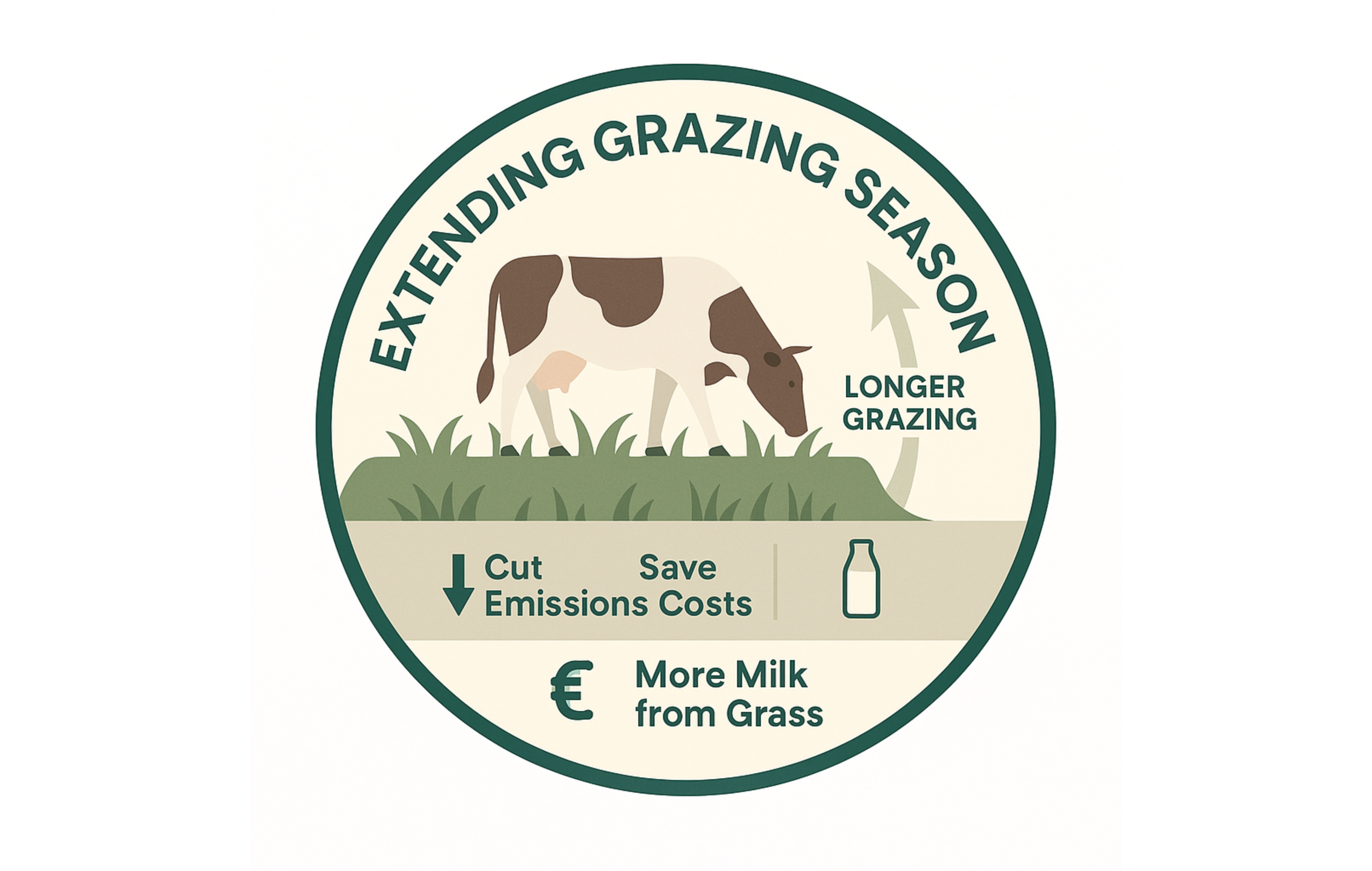
The Solution: Extending Grazing Season
Extending the grazing season means turning cows out earlier in spring and keeping them at grass later into autumn. It builds on what nature already gives us: solar energy, homegrown feed, and strong root systems.
By grazing even 10 more days each year, farms can reduce greenhouse gases and feed bills. Grass replaces imported meal. Cows walk and spread manure naturally. Slurry is avoided. Trials show each extra 10 grazing days cuts GHG by up to 1.7 %.
Key Benefits when Extending Grazing Season
Cut Emissions
Grazing longer reduces emissions from housing, feeding, and storage. It avoids methane from stored slurry and shrinks the carbon footprint of imported feeds.
Save Costs
Fresh grass is the cheapest feed. Grazing 10 extra days saves about €1.80 per cow – or €180 on a 100-cow farm. Those savings stack up across the season.
Yields from Grass
Longer grazing means more energy from grass and less from meal. Milk yields stay strong, while grassland management improves year-on-year.
Impact of Extending Grazing Season
Extending the grazing season is a cost-effective way to cut emissions, improve milk yield, and reduce slurry storage needs. Grazed grass offers higher energy content than silage and supports better animal performance.
When timed correctly, even modest extensions bring measurable environmental and financial gains without major infrastructure changes.
Studies from Teagasc and Farm Zero C show that longer grazing can:
- Reduce GHGs by up to 10% with full-season extension
- Increase milk returns by €1,400–€2,900 for 100 cows
- Reduce indoor slurry by 15–25%
Lower housing energy use and feed demand
See the table below for expected impacts under Irish dairy conditions.
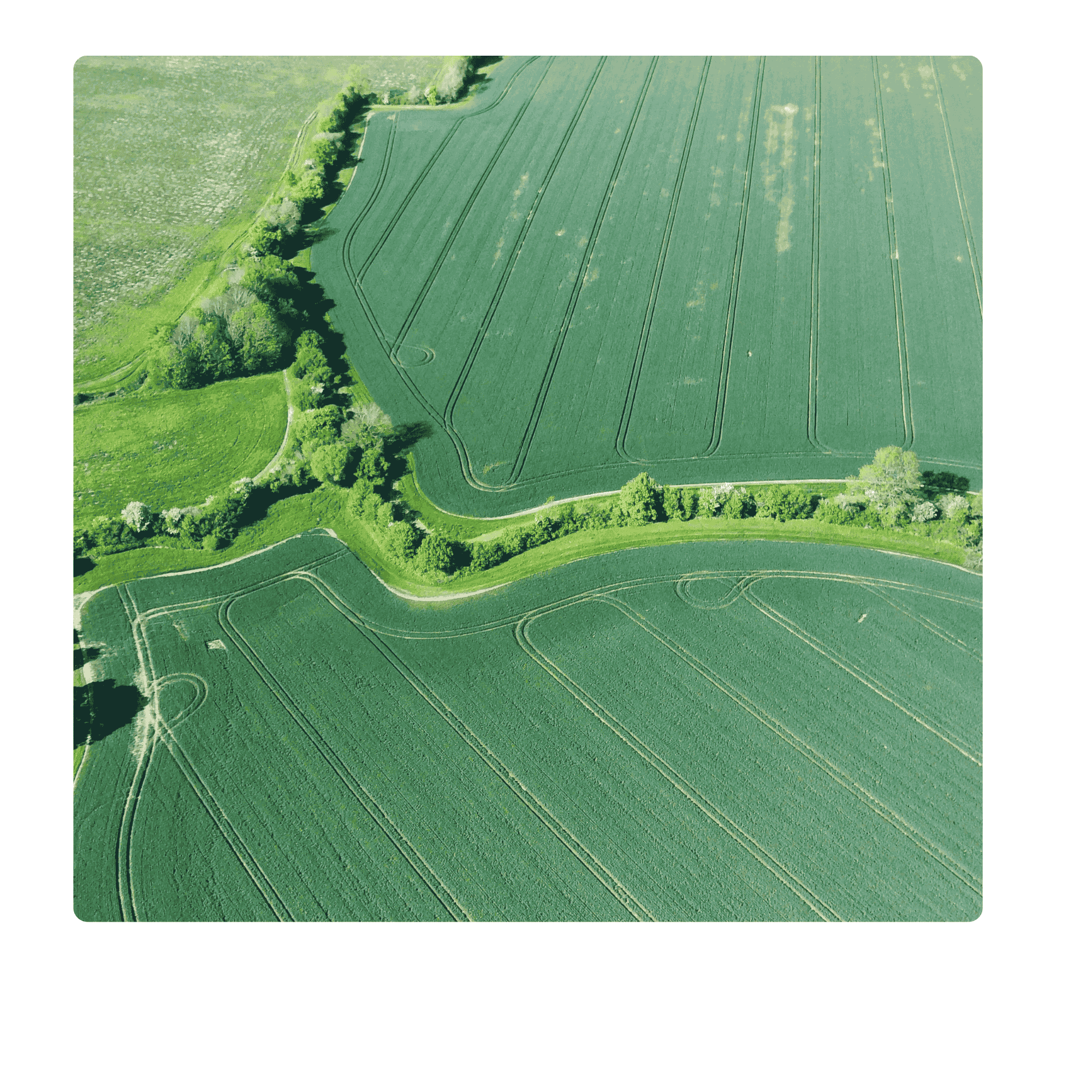
|
Scenario
|
Days at Grass
|
Extra Milk Revenue
|
GHG Emissions
|
% GHG Reduction
|
|---|---|---|---|---|
|
Baseline |
241 |
- |
0.960 kg CO₂-eq/kg milk |
0% kg CO₂-eq/kg milk |
|
Add 7 Days |
248 |
€1,465 |
0.936 kg CO₂-eq/kg milk |
1.04% kg CO₂-eq/kg milk |
|
Add 21 Days |
262 |
€2,930 |
0.936 kg CO₂-eq/kg milk |
2.71% kg CO₂-eq/kg milk |
Considerations
Weather & Soil
Grazing longer depends on mild weather and well-drained soils. Heavy rain or poor pasture can damage swards. It’s essential to avoid poaching and protect paddocks during shoulder seasons.
Infrastructure & Planning
Good access lanes, shelter, and paddock rotation help support spring turnout and autumn grazing. Reseeding, liming, and fertiliser timing can also improve resilience.
Grazing Management
Mob grazing and block rotation work best. Planning ahead – including closing paddocks early, ensures enough grass is available when cows go out.
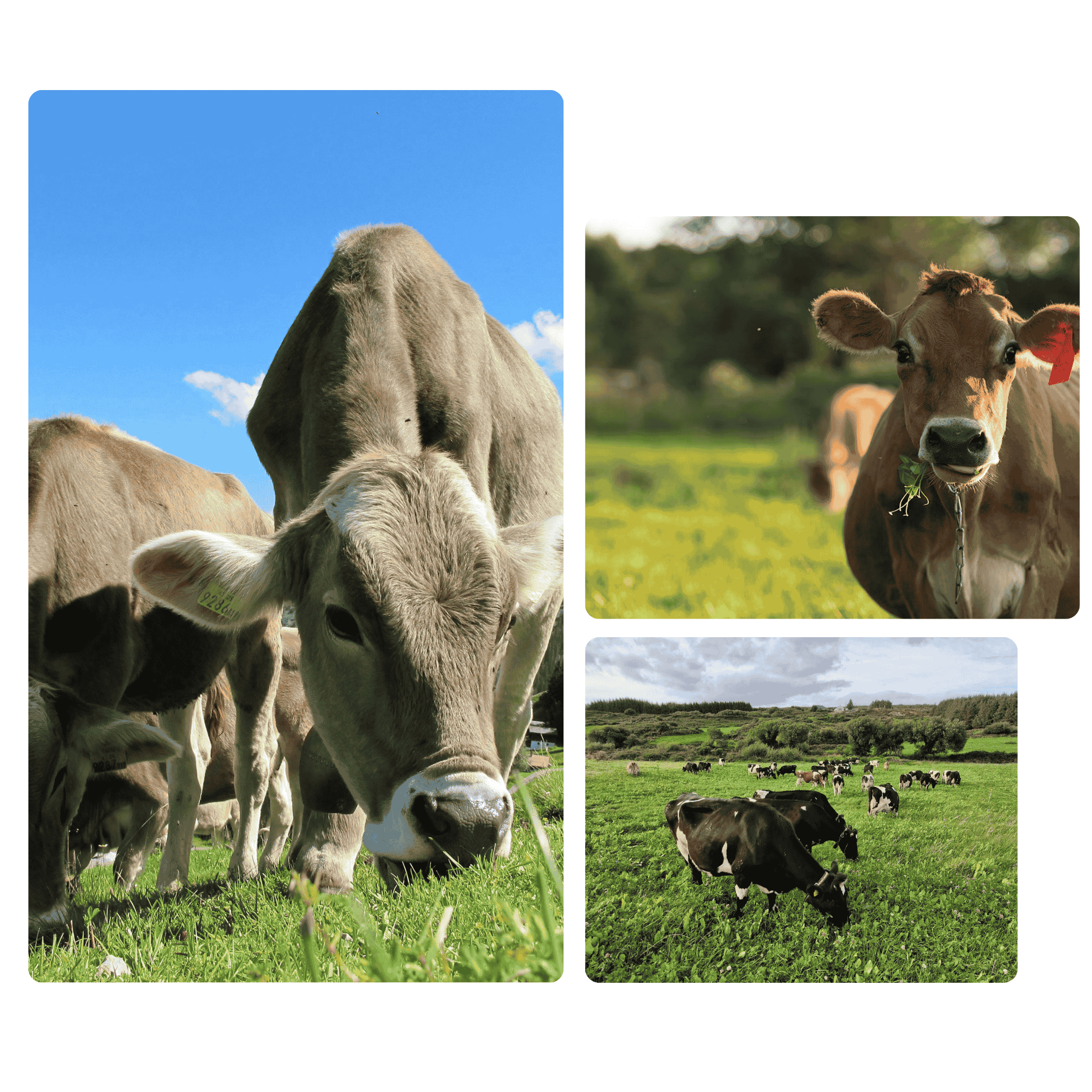
Implementation
Extending grazing takes planning, but the gains are significant. With good soil, rotation, and infrastructure, many farms can hit +30 or even +60 days per year. Here’s how to get started.
1. Target early turnout. Begin planning in autumn by closing paddocks early to build spring grass cover. Aim for 30–40 % of grazing days to occur by early March for best results.
2. Improve access points. Maintain or upgrade farm infrastructure such as laneways, back-fences, and gates. Good access reduces the risk of poaching and supports turnout in variable weather.
3. Plan your rotation. Use a rotation planner to align grass growth with herd demand. Combine paddock walks and feed budgeting tools to avoid overgrazing and improve pasture use year-round.
Behind the Research
ODOS Tech was founded by Cian White and Alejandro Vergara, two sustainability specialists with deep expertise in agricultural climate action.
Alejandro (left), a PhD in environmental engineering from University College Dublin, helps farmers measure their carbon footprint and implement mitigation strategies to reduce their impact. Cian (right), a researcher at Trinity College Dublin with a PhD in ecology, works on restoring nature to increase biodiversity on farms using satellite imagery to monitor habitats.
Together, they helped lead the carbon and nature-based work for the Farm Zero C project at Shinagh Farm, one of Europe’s first net-zero dairy pilots. In 2020, they launched ODOS, a platform that built smart, science-based tools to help agri-food businesses protect the environment and restore nature.

Research
Teagasc Pasture Trials
Teagasc has trialled extended grazing across dairy systems and found each 10-day gain cuts emissions by ~1.7 % and improves grass utilisation, milk solids, and fertiliser efficiency across the board.
Tirlán Grazing Reports
Industry data shows that farms reaching 270+ grazing days per year report better margins, lower feed bills, and more consistent pasture growth over time.
IPCC and EU Policy
Longer grazing aligns with climate-smart practices recommended by the IPCC and EU. It supports biodiversity, improves nutrient cycling, and reduces emissions without sacrificing productivity.
Discover other Strategies
Slurry Acidification
Slurry acidification reduces fertiliser demand and cuts emissions by up to 5% during storage and spreading.
Slurry Treatment
Treating slurry with hydrogen peroxide cuts emissions by up to 4% and reduce methane by up to 80% during storage.
Slurry Cover
Covering slurry stores cuts emissions by up to 5% and saves €3,600 over 50 hectares per year by reducing synthetic fertiliser use.
Extending Grazing Season
Extending the grazing season cuts emissions by up to 2.7% and boosts milk revenue by nearly €3,000 per farm.
Antimethanogenic Feed Additives
Antimethanogenic feed additives cut methane emissions by up to 28% and cost €6975 per 93 cows annually.
Grass Biorefinery
Grass biorefineries replace soy protein, save €3,000 in feed costs, and cut emissions by 8.9%.
Anaerobic Digestion
Sending slurry to anaerobic digestion can cut emissions by up to 9.4% and generate up to 400 MWh of energy per year.
Multispecies Swards
Switching to multispecies swards cuts emissions by up to 8.8% and saves €4,400 in fertiliser across 50 hectares.
Red Clover Silage
Using red clover silage cuts emissions by up to 8.2% and saves €2,000 in fertiliser across 20 hectares.
White Clover Silage
Incorporating white clover silage cuts emissions by up to 7.8% and saves €4,500 in fertiliser costs over 50 hectares.
Low Emission Slurry Spreading
Low-emission slurry spreading cuts ammonia by 60% and saves €45/h in fertiliser costs.
Genetic Selection
Genetic selection for high-EBI cows cuts emissions by up to 6.3% and boosts gains by €7,800 per 100 cows.
Protected Urea
Switching to protected urea cuts fertiliser costs and lowers emissions by up to 5.6% per kg of milk.
Ready to reduce emissions through Extending Grazing Season?
Talk to our Carbon Footprint & Biodiversity experts on how we can help.


